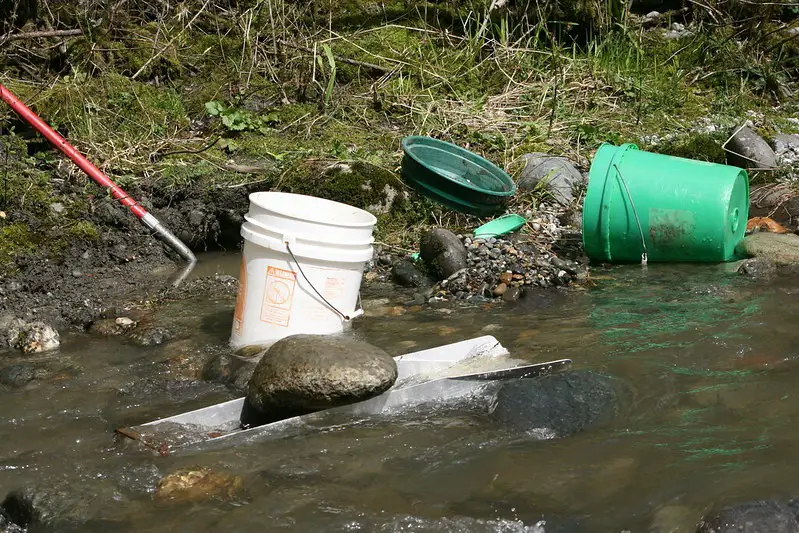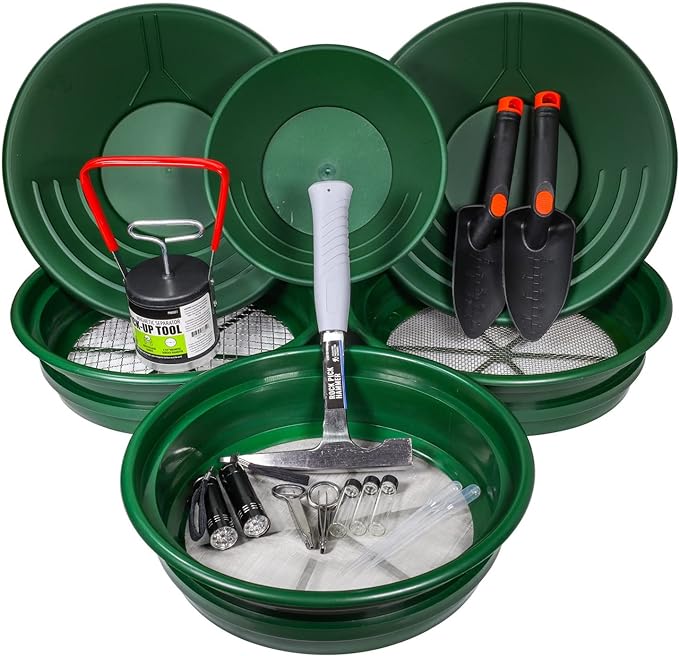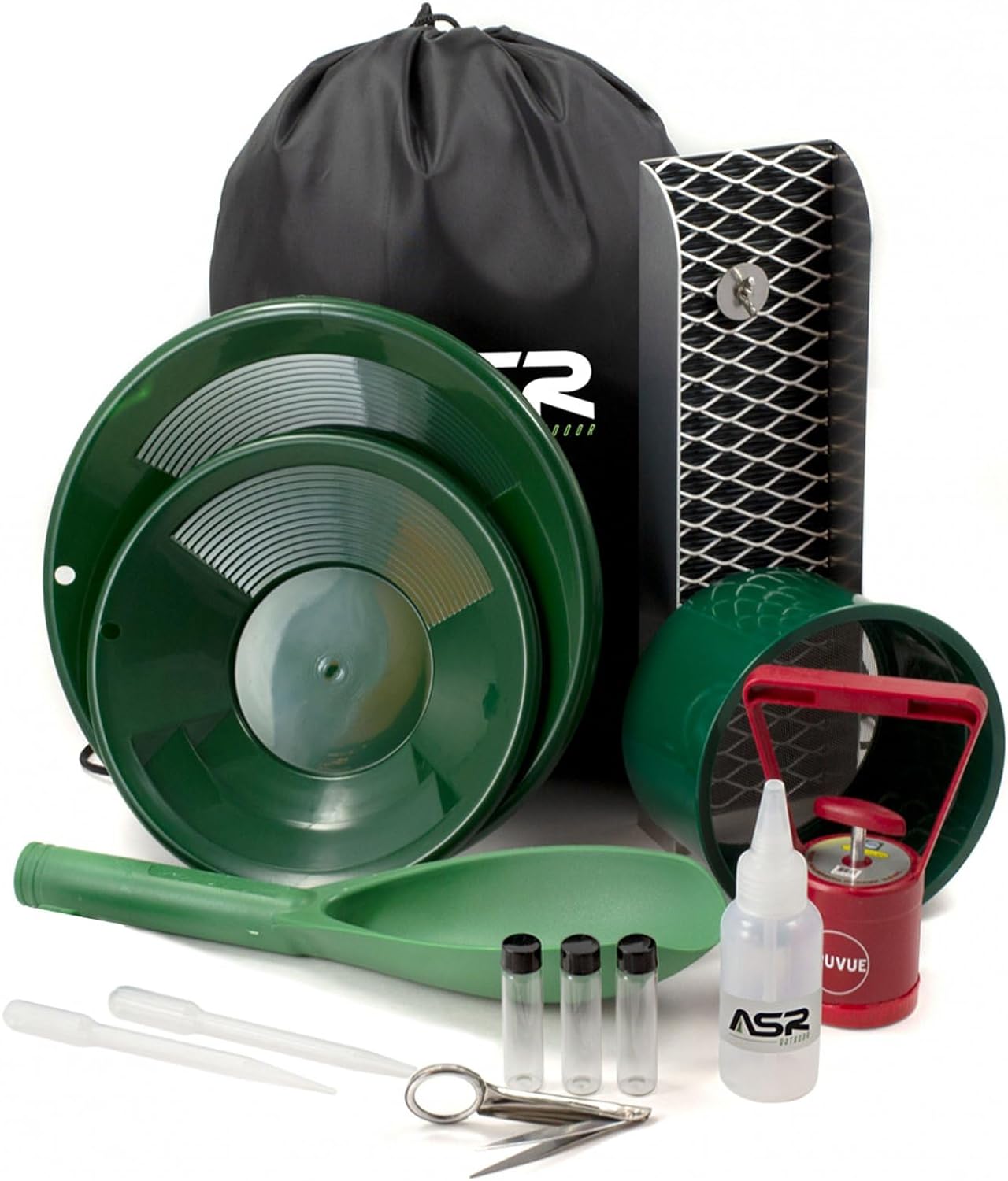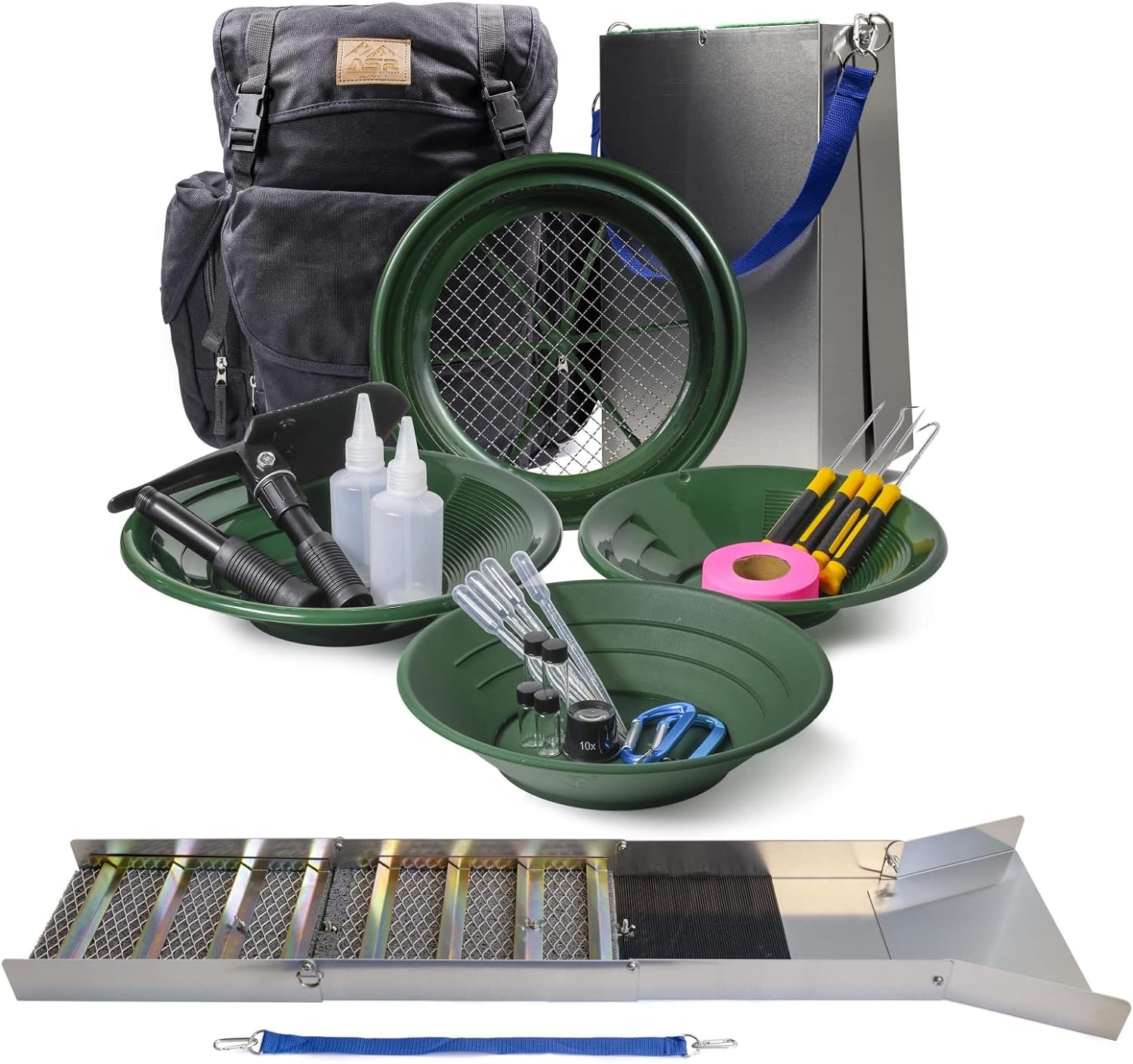Are you a treasure seeker, looking to strike it rich? Look no further than New Hampshire, a hidden gem for gold prospecting. In this comprehensive guide, you will uncover the secrets of uncovering hidden treasure in the Granite State. From the winding rivers and streams to the breathtaking mountain ranges, you will learn the best techniques, tools, and locations to maximize your chances of finding gold. Whether you are a seasoned prospector or a complete beginner, this article will serve as your trusted companion, revealing the exhilarating world of gold prospecting in New Hampshire. So grab your pan, strap on your boots, and let’s embark on this exciting adventure together!
Legalities of Gold Prospecting in New Hampshire
State and Federal Regulations
When it comes to gold prospecting in New Hampshire, it is essential to familiarize yourself with both state and federal regulations. The state of New Hampshire requires that you obtain a permit before engaging in any gold prospecting activities. This permit can be obtained from the New Hampshire Department of Environmental Services (DES). Additionally, it is important to adhere to federal regulations such as the Clean Water Act and the Endangered Species Act, which protect the environment and its inhabitants.
Permits and Permissions
To obtain a permit for gold prospecting in New Hampshire, you will need to contact the New Hampshire Department of Environmental Services. They will provide you with all the necessary information and forms required to apply for a permit. It is important to note that permits are typically valid for a specific duration and must be renewed if you wish to continue prospecting. Additionally, if you plan to prospect on private land, it is crucial to obtain permission from the landowner beforehand.
Protected Areas and Restrictions
While New Hampshire offers numerous opportunities for gold prospecting, there are also areas that are protected or restricted. These areas include state parks, wildlife refuges, and certain conservation lands. It is imperative to familiarize yourself with the specific regulations governing these areas to avoid any legal issues. Additionally, be mindful of any cultural or historical sites that may have restrictions on prospecting to preserve their integrity.
Understanding the Geology of New Hampshire
Rock Types and Formation
To increase your chances of success in gold prospecting, it is important to have a good understanding of the geology of New Hampshire. The state is predominantly composed of rocks from the Devonian, Mississippian, and Pennsylvanian periods. Common rock types include schist, slate, granite, and quartz veins. These geological formations play a significant role in the deposition and concentration of gold.
Primary Gold Deposits
Primary gold deposits in New Hampshire are relatively rare. These deposits are typically formed deep within the Earth’s crust through hydrothermal processes. The gold is then brought closer to the surface through tectonic activity and erosion. Primary gold deposits are typically found in quartz veins and require more extensive exploration and mining techniques.
Secondary Gold Deposits
Secondary gold deposits are much more common in New Hampshire. These deposits occur when the original gold-bearing rocks are eroded, and the gold particles are transported and deposited in new locations. Secondary gold deposits can be found in streambeds, river valleys, and glacial deposits. The depth and extent of these deposits can vary, so thorough exploration is necessary.
Glacial Deposits
One unique aspect of gold prospecting in New Hampshire is the presence of glacial deposits. During the last Ice Age, glaciers moved across the region, picking up rocks and minerals and depositing them in new locations as the ice melted. These glacial deposits can contain gold particles that were transported from their original source. Exploration of glacial deposits often involves studying the topography and understanding the movement of glaciers.
Researching Historical Gold Discoveries
Historical Mining Districts
Researching historical gold discoveries can provide valuable insights for present-day prospectors. New Hampshire has several historical mining districts, such as the Bath, Lyman, and Rye districts. These districts were known for their gold production during the 18th and 19th centuries. Exploring these areas can give you a better understanding of the geological conditions that lead to gold deposition.
Significant Gold Finds
Throughout history, there have been significant gold finds in New Hampshire. One of the most notable discoveries was made in 1855 when gold was found in the Wild Ammonoosuc River in Bath. This discovery sparked a gold rush in the area, attracting prospectors from all over. Learning about these significant finds can provide valuable information on potential gold-bearing areas and the techniques used by past prospectors.
Learning from Past Prospectors
Studying the methods and experiences of past prospectors can help you refine your own gold prospecting techniques. Historical records and accounts can provide valuable insights into the best locations, tools, and strategies employed by successful prospectors. By learning from the mistakes and successes of those who came before, you can increase your chances of finding gold in New Hampshire.
Essential Tools and Equipment for Gold Prospecting
Metal Detectors
A reliable metal detector is an essential tool for any gold prospector in New Hampshire. Metal detectors can help you identify potential gold-bearing areas by detecting small traces of gold buried beneath the surface. Look for a metal detector that is specifically designed for gold prospecting, as they are more sensitive to small gold particles and have adjustable settings to minimize interference from minerals in the soil.
Gold Pans
Gold pans are a classic and inexpensive tool for gold prospecting. They are used to manually separate gold particles from other sediment and rocks. Gold pans work by allowing the heavier gold particles to settle at the bottom of the pan while the lighter material is washed away. Look for a sturdy, lightweight gold pan with riffles or grooves on the inside to help trap the gold.
Sluice Boxes
A sluice box is a versatile tool that can significantly increase your gold recovery rate. It is essentially a long trough with riffles or bars at the bottom to catch gold particles as water flows through. By setting up a sluice box in a stream or river, you can process larger volumes of material and capture more gold. Look for a sluice box that is lightweight, adjustable, and easy to transport.
Classifiers
Classifiers, also known as screens, are used to separate larger rocks and debris from the material you are prospecting. By using a classifier, you can remove unwanted material and focus on the smaller particles that may contain gold. Look for classifiers with different mesh sizes to adjust to different types of materials and for easy cleaning.
Snuffer Bottles
A snuffer bottle is a small, handheld device used to suck up gold particles from your gold pan or sluice box. They are typically equipped with a straw-like tube and a squeeze bulb. Snuffer bottles allow for precise extraction of gold particles, minimizing the risk of losing any valuable material. Look for a snuffer bottle with a tight-fitting cap and a durable construction.
Magnifying Loupes
A magnifying loupe is a valuable tool for examining and studying small gold particles. It allows you to get a closer look and assess the quality and characteristics of the gold you find. Magnifying loupes are especially useful when it comes to identifying gold that is embedded in quartz or other rocks. Look for a loupe with a high magnification power and a comfortable grip.
Choosing the Right Prospecting Locations
Public Gold Panning Sites
New Hampshire offers several public gold panning sites where you can legally prospect for gold. These sites are typically located on public lands and provide designated areas for gold panning. Be sure to familiarize yourself with the specific rules and regulations of each site, as they may have restrictions on equipment, permit requirements, or operating hours.
Private Claims and Clubs
Joining a gold prospecting club or obtaining access to private claims can provide exclusive opportunities and support from fellow prospectors. Private claims are areas of land where individuals or clubs have obtained permission from the landowner to prospect for gold. These areas may offer less competition and more potential for finding gold. Check with local gold prospecting clubs or contact landowners directly for access to private claims.
Riverbeds and Creeks
Riverbeds and creeks are excellent locations for gold prospecting in New Hampshire. The flowing water naturally concentrates gold particles, making it easier to find. Focus on areas of the riverbed where the water slows down, such as pools or bends. Pay attention to exposed bedrock, as it can act as a natural trap for gold particles. Using a sluice box or gold pan in these areas can yield fruitful results.
Old Mines and Tailings
Exploring old mines and tailings can be a rewarding prospecting strategy. Abandoned mines often have significant amounts of gold-bearing material left behind. Look for signs of previous mining activity, such as tailings piles or old mine entrances. These areas can contain gold that was missed or discarded by earlier miners. However, it is essential to obtain permission from the landowner and prioritize safety when entering abandoned mine areas.
Highly Mineralized Areas
Highly mineralized areas, such as quartz veins or areas with visible sulfide minerals, can also be promising for gold prospecting. Gold often occurs in association with other minerals, and highly mineralized areas can indicate the presence of gold. Keep an eye out for quartz veins or rocks with a metallic sheen, as they can be indicators of gold mineralization.
Identifying Signs of Gold
Geological Indicators
Geological indicators can help you identify potential gold-bearing areas. Look for geological features such as fault lines, shear zones, or contact zones between different rock types. These areas can create favorable conditions for gold deposition. Additionally, pay attention to areas where the landscape has been altered by natural forces such as erosion or glaciation, as they can expose gold-bearing rocks and deposits.
Visual Clues in Rocks and Minerals
Visual clues in rocks and minerals can also indicate the presence of gold. Gold often occurs in association with quartz, so look for rocks that contain quartz veins or have a gold or yellowish color. Pyrite, also known as “fool’s gold,” is another mineral commonly associated with gold. It has a metallic luster and a brassy-yellow color. However, it is important to note that pyrite itself does not contain gold.
Testing with Magnetism
Gold is not magnetic, so testing for magnetism can help distinguish gold from other minerals. Use a magnet to see if the mineral or rock you are examining is magnetic. If it is not attracted to the magnet, there is a higher likelihood that it may contain gold. However, it is important to note that other non-magnetic minerals can also contain gold, so this test should be used in conjunction with other methods.
Color and Specific Gravity
The color and specific gravity of a mineral can also provide clues about its potential gold content. Gold has a distinct yellow color and a relatively high specific gravity compared to other minerals. By comparing the color and specific gravity of a mineral to known samples of gold, you can make a preliminary assessment of its gold content. However, it is important to confirm through further testing before drawing any conclusions.

Methods for Extracting Gold
Using a Gold Pan
Using a gold pan is one of the simplest and most traditional methods of extracting gold. Start by carefully scooping up sediment and water from a stream or river into your gold pan. Gently swirl the pan to allow the water to wash away the lighter material, gradually revealing the heavier gold particles. Continue this process, carefully removing the lighter material until only the gold remains at the bottom of the pan.
Sluicing for Fine Gold
Sluicing is a method that allows for larger volumes of material to be processed, increasing the chances of finding fine gold. Set up a sluice box in a flowing stream or river, ensuring that the water is running at the correct velocity to carry away the lighter material. Feed the material into the sluice box and let the flowing water do the work of washing away the lighter sediment, leaving behind the heavier gold particles trapped in the riffles.
Dredging and Highbanking
Dredging and highbanking are more advanced methods that require specialized equipment and permits. Dredging involves using a suction dredge to remove sediment from the bottom of a riverbed or creek, exposing potential gold-bearing material. Highbanking, on the other hand, utilizes a highbanker, which is essentially a motorized sluice box that can process larger volumes of material. These methods require careful planning and adherence to regulations.
Using a Metal Detector
Using a metal detector can be an effective method for finding gold nuggets or small gold particles. Metal detectors are especially useful in areas where gold is known to be present but may be difficult to spot with the naked eye. Walk slowly and systematically, scanning the ground with the metal detector. When the detector signals a potential target, use a hand tool to dig carefully and locate the source of the signal.
Safety Precautions and Environmental Considerations
Personal Protective Equipment
When engaging in gold prospecting activities, it is important to prioritize personal safety. Wear appropriate protective equipment, such as gloves, safety goggles, and sturdy footwear. Especially when using tools or equipment that involve sharp edges or moving parts, ensure that you are taking necessary precautions to minimize the risk of injury.
Avoiding Environmental Damage
Responsible gold prospecting includes minimizing environmental damage. Be mindful of the impact your activities may have on the surrounding ecosystem. Avoid disturbing sensitive habitats or damaging vegetation. Properly dispose of any waste or garbage generated during your prospecting activities. By leaving the environment in the same or better condition than you found it, you contribute to the preservation of New Hampshire’s natural beauty.
Minimizing Disturbance to Wildlife
While prospecting, be aware of the wildlife that may be present in the area. Minimize disturbance to wildlife by keeping noise levels to a minimum and avoiding direct contact with animals. Do not disturb nesting sites or disturb or harm any protected species. Observe wildlife from a distance and appreciate their presence without causing harm or stress.
Cleaning Up and Restoring Sites
After completing your gold prospecting activities, it is crucial to clean up and restore the site. Remove any trash or debris and ensure that you leave the area in its original condition. Fill in any holes or trenches that were created during your prospecting activities. By practicing responsible site restoration, you contribute to the overall preservation and sustainability of New Hampshire’s natural resources.
Processing and Refining Gold
Removing Impurities
When you have successfully recovered gold from your prospecting activities, it is important to remove any impurities before further processing. This can be done by melting the gold in a crucible and carefully skimming off any impurities that rise to the surface. Repeat this process as necessary until you are left with pure gold.
Amalgamation and Mercury
Amalgamation is a traditional gold refining method that involves using mercury to extract gold from ore or concentrate. However, the use of mercury is highly regulated and poses significant environmental and health risks. It is crucial to avoid using mercury unless you have the proper permits and knowledge to handle it safely. Always prioritize environmentally friendly refining methods over mercury amalgamation.
Using Nitric Acid
Using nitric acid is another method for refining gold. It involves dissolving the impure gold in nitric acid, which leaves behind any impurities as a residue. The dissolved gold can then be further processed to obtain pure gold. If you decide to use nitric acid, ensure that you follow proper safety protocols and dispose of the acid and residue responsibly.
Electrolytic Refining
Electrolytic refining is a modern and advanced method for refining gold. It utilizes an electrolytic cell to ionize gold particles and separate them from other impurities. This method requires specialized equipment and knowledge of electrolysis. If you choose to pursue electrolytic refining, it is important to do thorough research and seek guidance from experts to ensure safe and effective results.
Tips and Techniques for Success
Persistence and Patience
Gold prospecting requires persistence and patience. It may take time and multiple attempts to locate a productive gold-bearing area. Don’t get discouraged if you don’t strike gold right away. Continuously refine your techniques, learn from your experiences, and remain persistent in your pursuit.
Sampling Techniques
Sampling techniques are crucial for identifying potential gold-bearing areas. Take samples from different locations and depths to get a comprehensive understanding of the geological conditions. Utilize proper sampling tools, such as a shovel or hand trowel, and ensure that you are collecting representative samples for analysis.
Studying Geology and Topography
A solid understanding of geology and topography can greatly enhance your chances of success in gold prospecting. Study geological maps, topographic maps, and relevant literature to identify areas with high potential for gold deposition. Familiarize yourself with the geological indicators and visual clues that may point to the presence of gold.
Working with Other Prospectors
Collaborating with fellow prospectors can be beneficial for sharing knowledge, experiences, and resources. Joining a gold prospecting club or attending local events and meetings can connect you with like-minded individuals who share your passion for gold prospecting. Working together can increase your chances of success and foster a sense of camaraderie within the prospecting community.
In conclusion, gold prospecting in New Hampshire offers exciting opportunities for treasure hunters. By understanding the legalities, researching historical discoveries, acquiring the right tools, and employing effective techniques, you can increase your chances of finding gold in the Granite State. Remember to always prioritize safety, environmental responsibility, and respect for the land as you embark on your gold prospecting adventures. Happy hunting!
Get Started Panning
| Product | Description | Link |
|---|---|---|
 |
Deluxe Gold Panning Kit | Check it out on Amazon |
 |
Advanced Gold Panning Set | Check it out on Amazon |
 |
Professional Gold Panning Equipment | Check it out on Amazon |
Disclosure: As an Amazon Associate, I earn from qualifying purchases.




